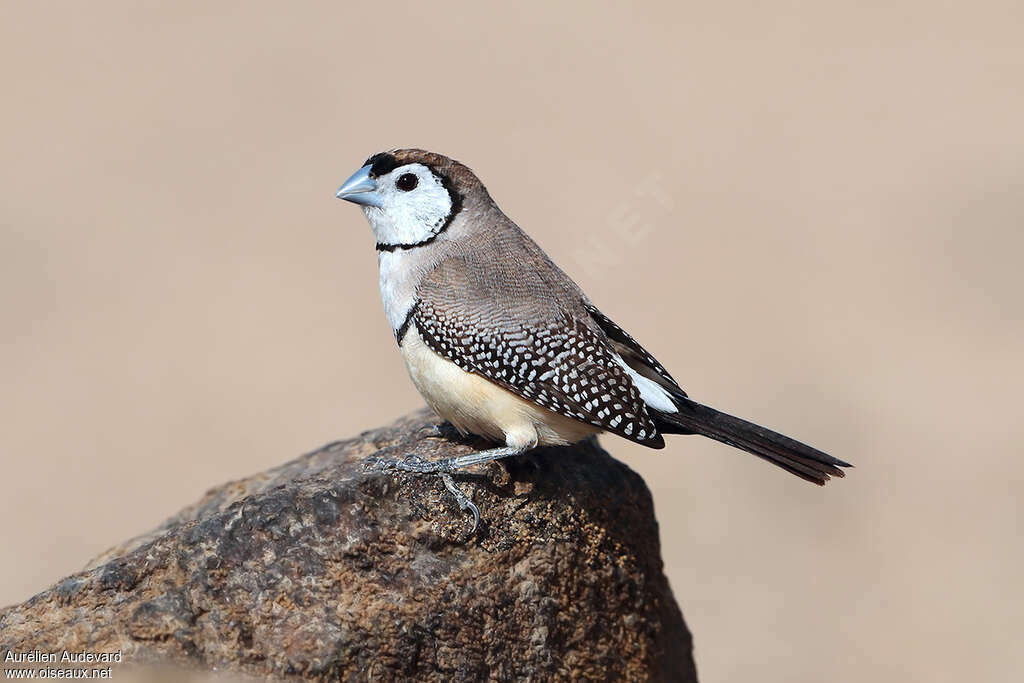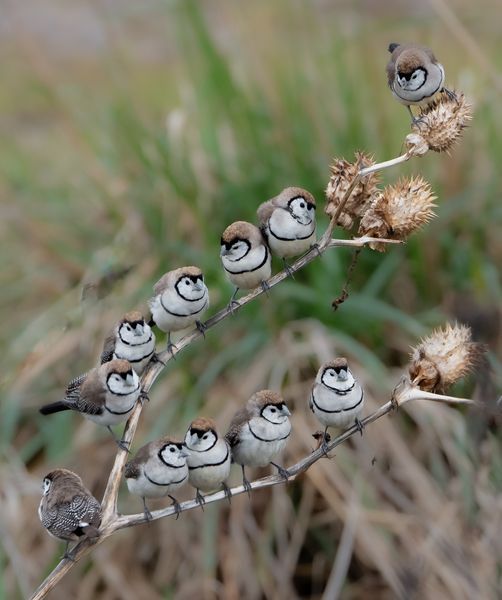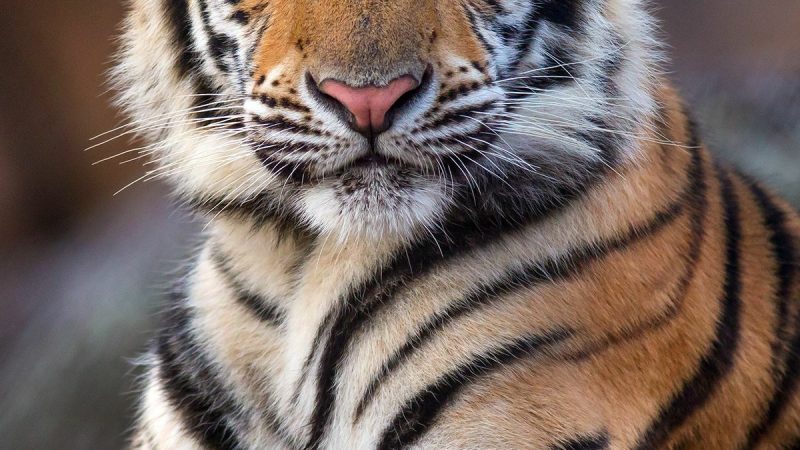The double-barred finch (Stizoptera bichenovii) presents a captivating plumage that showcases primarily brown upper parts from its crown to the back, embellished with faint blackish barring. A stunning contrast emerges in its underparts, which are predominantly white, forming a striking backdrop for a double narrow black band that elegantly adorns its throat. Its rump and upper tail-coverts are characterized by pristine white feathers, while the tail itself boasts a rich black hue. The breast exhibits tones of gray transitioning to white, further adorned with delicate grey barring along the sides. A captivating feature emerges as the forehead showcases a deep black shade, reminiscent of the facial disks often seen in certain owl species, accentuated with a border of black. The double-barred finch presents itself with a robust pale blue bill, complemented by grey legs, feet, and dark brown eyes.

Gender distinctions between males and females are subtle, with males possessing slightly thicker chest bars and a more pronounced white face and breast.
Even juveniles share a resemblance with their adult counterparts, albeit with an overall browner plumage.

These alluring birds call northern and eastern Australia their home, and they are never far from water, often frequenting open woodlands, forest edges, grassy woodlands, scrublands, farmlands, roadside shelter belts, parks, as well as rural and suburban gardens.

As devoted seed consumers, the double-barred finch primarily feeds on seeds derived from various grass and herb species. During the breeding season, they may occasionally supplement their diet with insects and larvae.

Breeding season timing varies, occurring during the latter half of the wet season in Northern Australia. Meanwhile, it extends throughout the year in Queensland and spans from July to November in New South Wales. During this period, these finches construct a ball-shaped nest using grass, featuring a side entrance leading to an interior lined with soft grass and down. Nest placement is typically within small trees or bushes, positioned at heights of 1 to 5 meters above ground level. A clutch of 3 to 6 eggs is laid and incubated for approximately 11 to 13 days by both the female and male. After 19 days, the chicks fledge.

Although sometimes kept as caged birds, the double-barred finch is not currently classified as threatened by the IUCN, despite experiencing declines in certain coastal regions of the eastern coast.




